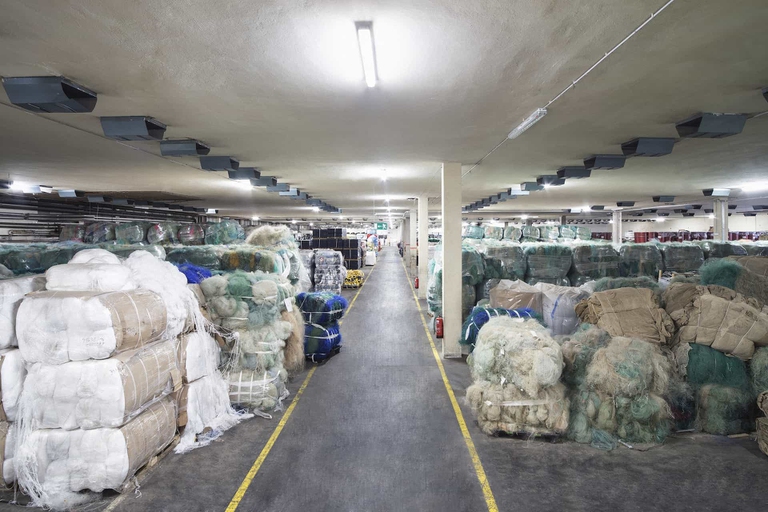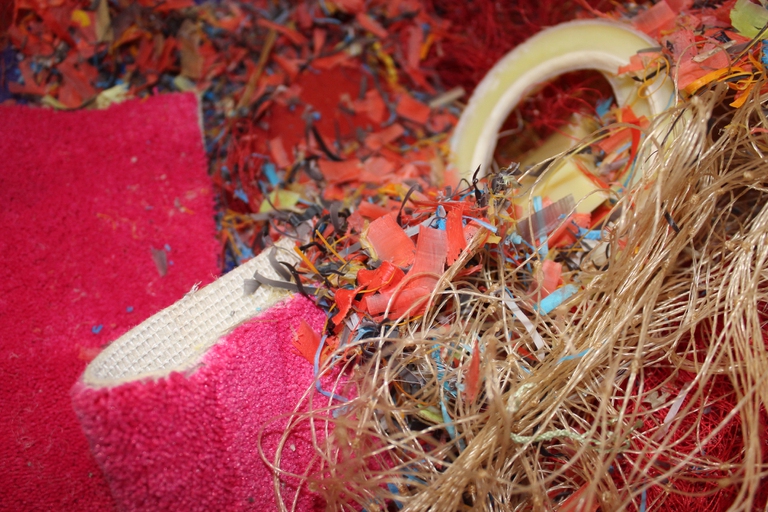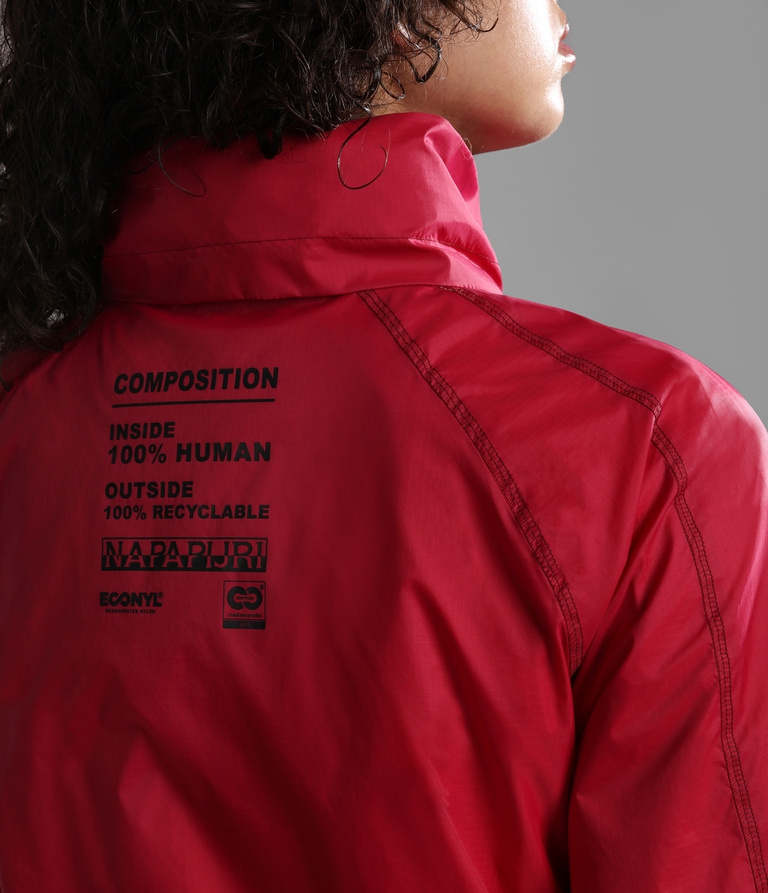https://www.lifegate.it/nylon-riciclato
- |
The advent of recycled nylon in the world of textiles it was certainly one of the crucial achievements of the sector:nylon, being a petroleum derivative, has very high environmental costs and, although polyester and nylon are not the same thing, the considerations we had made in terms of impact on the environment and on oil demand are partly the same.The fact that today we are able to obtain nylon from other nylon already present in the form of waste is a very good thing, obviously, but it is necessary to clarify both the process and a possible new recycling at end of life.
Meanwhile, not all the nylon present in the world in the form of waste can be recycled with a process that is not too energy intensive, and secondarily, so that the new nylon obtained is in turn reusable, the product made from it must follow certain standards.We talked about it with Giulio Bonazzi, president and CEO of Aquafil, a manufacturing company Econyl, a recycled nylon yarn made from waste fishing nets and discarded carpets.As part of our focus on more environmentally friendly materials, we have tried to analyze the process that leads to a product with Econyl, evaluating positive and negative aspects and difficulties related to both the process and the possible recycling of the material at the end of its life.
Recycled Nylon:the genesis of Econyl
“The first outline of an idea relating to Econyl was born more than 20 years ago” says Giulio Bonazzi.“The awareness of having to change something in the production processes began to mature within Aquafil towards the end of the nineties, when we realized that if we continued to produce only polyamide 6 sooner or later we would exit the market, in as an energy-intensive company that processed a petroleum derivative."The plant capable of producing Econyl only arrived in 2011 and it is cost the company years of research:“Other companies had also tried and failed, but after a great deal of effort we succeeded and we did so by exploiting a characteristic that is specific to our main molecule, namely polyamide 6, or more commonly called nylon 6, which has the ability to a step back in the chemical chain through a process called depolymerization.We have perfected this process and applied it to preferably post-consumer waste."

Today Aquafil has managed to produce more than 45 thousand tons per year of Econyl, which represent approximately 45 percent of turnover of all the synthetic fibers produced by the company.From a small plant to a very sophisticated technology, today recycled nylon is a vital production line for the company.
Lights and shadows
“Econyl comes 100 percent from waste, so it does not involve new resources, much less fossil ones.The process to produce it clearly consumes energy, but it is a process whose carbon footprint is 90 percent lower than the conventional process, which is the one that obtains nylon from oil.This is possible because our intrinsic energy is approximately 75 percent less than that normally used to transform oil into nylon and, where possible, we use energy obtained from renewable sources."
The company's goal is to lower its carbon footprint by 100 percent compared to the traditional process.“To get to reduce even that 10 percent of residual energy we must work on energy consumption, because even from a waste point of view ours is a virtuous process.Our water processes are all in a closed cycle and below any level of danger, as well as gaseous waste, or emissions into the air, are lower than those allowed by legislation.However, the problem still needs to be improved physical waste of actual nylon:essentially when we introduce nylon to be recycled we find little 100 percent pure nylon, on the contrary we find a lot of nylon processed together with other materials, which do not enter into our process.We must therefore find a way not to generate this waste or to recycle other materials."

In fact, the theme is precisely this: the recycling process it is not so simple to carry out if the waste material available is not homogeneous.In fact, not all nylon waste is recyclable in the same way:in the case of Econyl, most of the new yarn is made from abandoned fishing nets and carpets.“For example, if the anti-algae used for fishing nets in the aquaculture sector is copper-based, then we have no problems, the nets are entirely recyclable and do not produce waste, otherwise it is possible that there will be residues.Both the nets and the carpets are processed through depolymerization reactors, but everything that is not nylon is discarded again, it is these residues that need to be worked on.
Circular dream
Aquafil produces every year 45 thousand tons of Econyl, which is the result of the recycling of 10 thousand tons per year between fishing nets, for the most part, and carpets, all of course post consumption.According to an internal rule that the company has established, Econyl must contain at least 50 percent nylon coming from post-use or post-consumer flows.“As far as the pre-consumption part is concerned, they are above all waste from our customers:we are working together with them to arrive at a process that involves zero waste or we recover leftovers that contain nylon but which are not interesting for the plastics industry".

“Today the recycling rates for fishing nets are excellent, both for those used inB.Cquaculture, than for those used in large fishing vessels in northern Europe.There, for example, we have the participation of a Norwegian company that deals with the collection and preparation of nets specifically for our recycling system and we are starting to collaborate in this sense also with companies in Chile, in Patagonia, where fishing nets there are many but for the moment little or nothing has been done in terms of circularity".
For the circular dream to come true, however, greater attention would be needed at the design level, for example of clothing.Because if recycling fishing nets and carpets is not simple but it is doable, recycling clothes today is still very complicated.“We are a company that generates circularity within the molecule, that is, from nylon waste we produce synthetic nylon fibres, which are then used above all in textile flooring and clothing.What we are still unable to generate is circularity in the sector:There are few carpets that go back to being carpets and there are very few, if any, items of clothing that go back to being carpets.We transform nylon scraps that come from fishing nets which then become fabrics for Prada, Burberry, Stella McCartney, but hardly then from these clothes we get other clothes.
Which makes sense for luxury:if someone brings me back a Prada backpack that costs 1350 euros I'd be crazy to recycle that it is a product that must be resold, because part of its value is given by the intrinsic component of the brand, the value of the production materials is minimal compared to the total.A different discussion must be made however for the sectors of fast fashion or of child, which greatly stimulate the consumer to purchase through the price lever.Players in this sector should be forced to make circular products, because clothing is used little or not at all."

However, for an item of clothing to be recyclable, it must already be thought of as such from the outset, i.e. it should all be made entirely of the same material.So if it's nylon or econyl it should be made of 100 percent nylon or econyl.“These sectors must change the way they approach garment design, we must provide them with the ingredients that allow them to do so, but the sector must start building the garment not only so that it is beautiful and cheap, but also so that it is recyclable.If a piece is made of 100 percent nylon, when it arrives in our factory recycling it is very easy and absolutely not expensive.If instead you start putting in a piece of nylon, a piece of cotton, a piece of polyester, a piece of metal, zippers, buttons, that's it. recycling that product is impossible”.
Or it would be anyway too energy intensive, because the piece should first be dismembered into its components and these then recycled individually.However, the sector is getting to work and, in addition to brands that collaborate with Aquafil by giving away their production waste, some virtuous companies are committing themselves to the design and creation of the first 100 percent products Econyl and nylon.This means not only that a virgin raw material was not used to produce them but that, at the end of their life, these can be recycled again.“We can count on production waste from brands such as Gucci, Stella McCartney and Prada.Napapijri, on the other hand, was the first brand, with the jacket The circular series of 2019, to create a product made at 99.5 percent of nylon and Econyl, including buttons.A few weeks ago it was Stella McCartney's turn, who launched a parka made in a circular perspective, therefore made of a single material".
